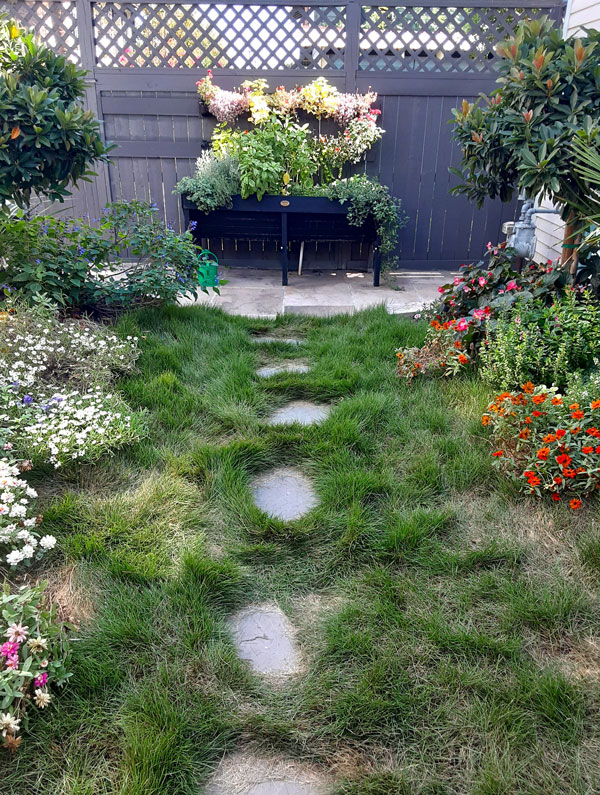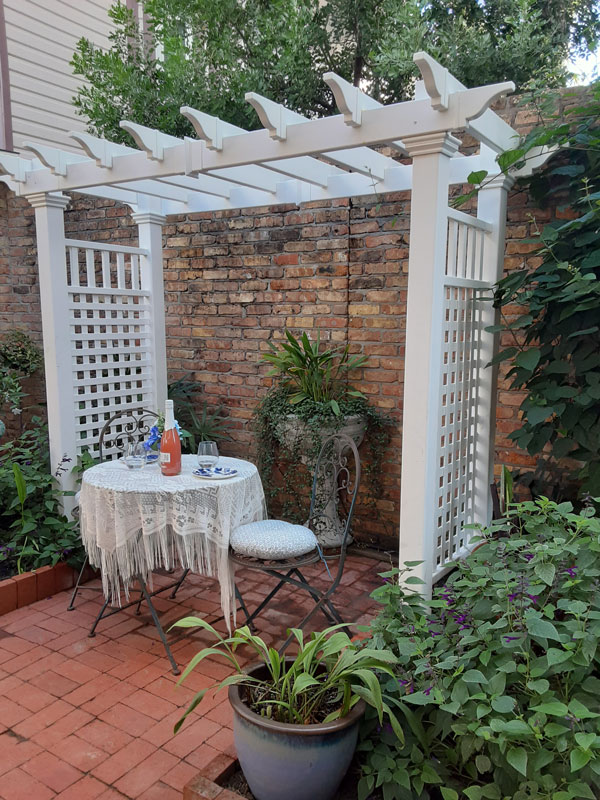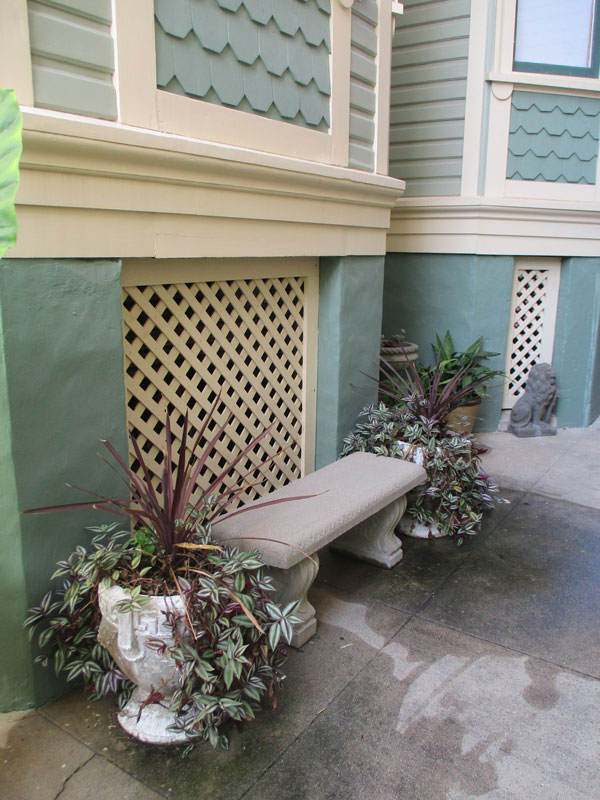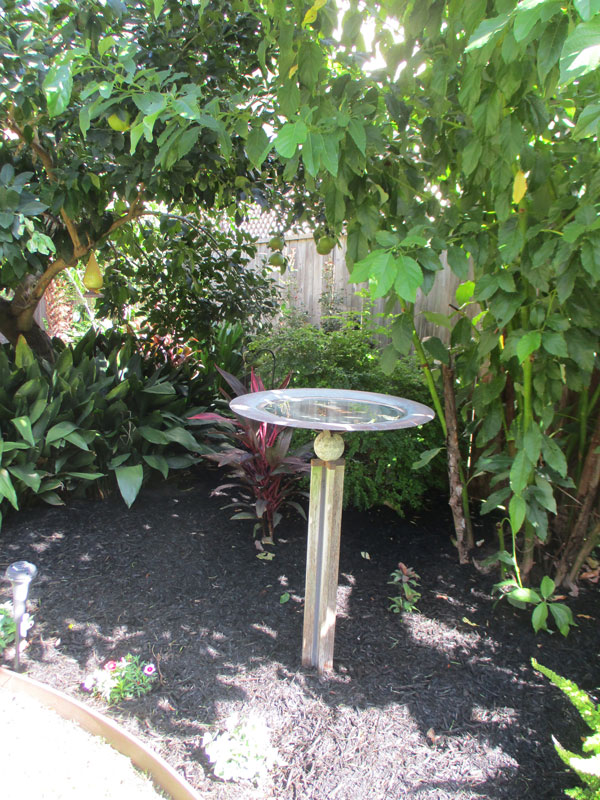Galveston gardens … as diverse as the butterflies that visit them – by Diane Morey Sitton
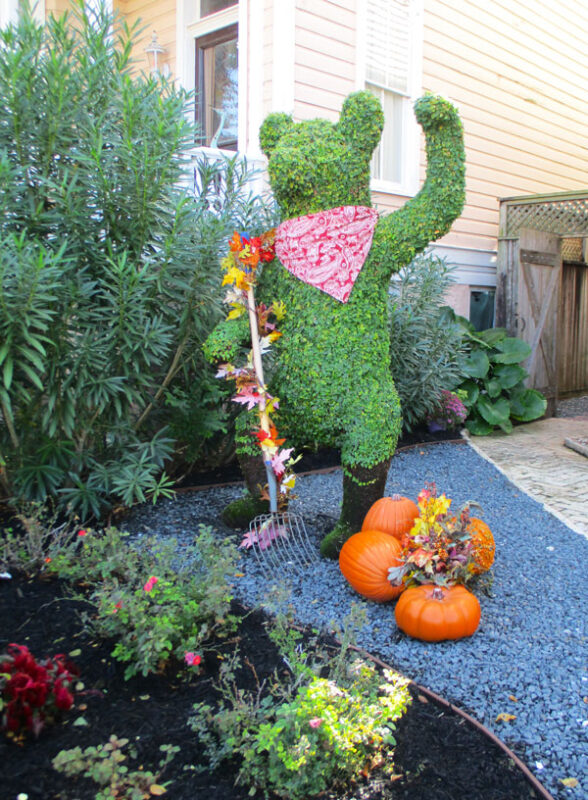
There’s nothing ordinary about the gardens in Galveston’s East End Historic District. Most are small; some are tiny, squeezed in narrow, alley-like side yards and tucked under outdoor stairways. They are adorned with seashells and sculptures carved from “hurricane trees.” Some boast surfboards; others fly shade sails.
Recently, six private gardens (as well as two neighborhood parks and the grounds of the League-Kempner House, an East End Historic District mansion currently under restoration) were showcased during the East End Historical District’s fall garden tour, an annual event that invites folks to stroll the flower-lined streets as they explore the gardens. Comprised of over 50 city blocks, the District is the largest of the historic districts in Galveston. It is known for its ornate Victorian homes and for its colorful history.
The District is also known for its many tree sculptures, an expression of resilience and creativity borne from the tidal surge that covered most of the Island during Hurricane Ike in 2008.

One such sculpture, a replica of the elegant figurehead that graces Galveston’s Tall Ship Elissa, anchors the front garden at Greg and Linda Strickline’s residence. Carved from a massive, storm-damaged oak, the figure rises from a corner bed containing a bench, a narrow walkway constructed from old chimney bricks saved during the home’s renovation, and an assortment of perennial plants including guara, foxtail fern, daylilies and hydrangea.
But the front garden is but a preview of the inviting landscape to come.
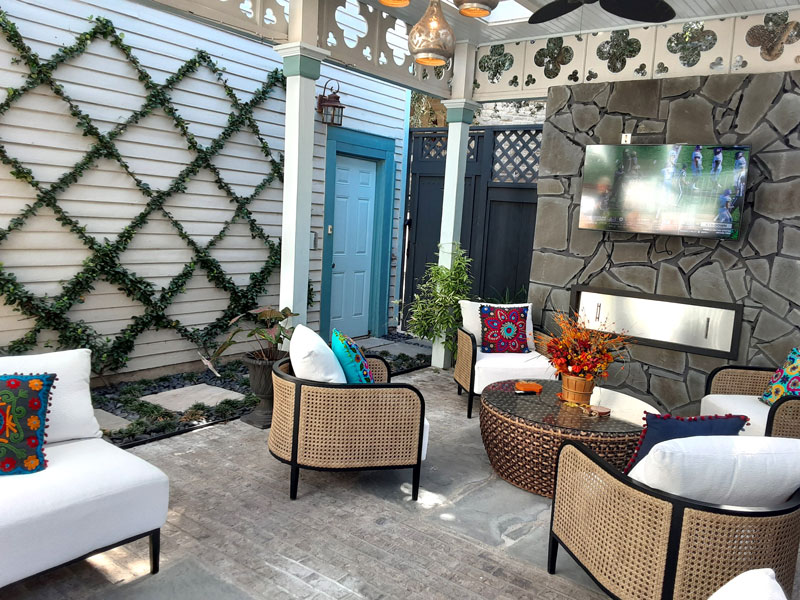
Garden rooms behind the historic house (circa 1900) are rich with focal points including a chandelier from Egypt that hangs in the TV room—a cozy area set under a decorative pergola. Three sabal palm trees anchor a conversation area between the house and pergola. They not only mimic the sabal palms that frame the front entrance, but they help provide year round privacy to the back garden. A meadow of zoysia grass, another back garden highlight, serves as a verdant greenspace. It is punctuated by a center walkway and fringed on both sides with floral tapestries consisting of zinnia, guara, salvia, bottlebrush, dianthus and windmill palm, among other selections. The long, narrow meadow draws attention to the herbal garden on the fence. It spills over with basil, mint and thyme.
Sitting areas and focal points abound, too, at the Albert Rakel House (circa 1887), where a massive shade sail dominates the back patio. Here, opportunities to enjoy the sea breeze and sunsets begin outside the back door on the large covered balcony/porch which overlooks two seating areas on the brick patio below. Containers filled with ginger, airplane plant, small palms, assorted succulents and other heat-loving selections add color and texture to the setting. A stained glass wall fountain, water bird statuary, and a white gazebo coupled with a café table number among the focal points.
About three blocks away, a whimsical, bear-shaped topiary waves to folks from David and Christi Bowden’s front garden. But once down the gracefully curving path in the narrow side yard, whimsy is set aside to make room for trees and plants that earn their keep. Here, a large grapefruit trees shares the “protected” environment of the fenced back yard with a banana tree, Arabicca coffee plant, avocado tree, pomegranate and coconut palm tree. Herbal selections include rosemary. The back gardens also feature a large pergola covered with star jasmine. In summer it offers respite from the hot Galveston sun. “In spring,” says Christi, “it looks like snow.”


